Transat Jacques Vabre: Coasting to Record Win
Published on November 18th, 2017
(November 18, 2017; Day 13) – Jean-Pierre Dick and Yann Eliès on St Michel – Virbac were a few miles away from a record-breaking victory in the Imoca class of the 13th edition of the Transat Jacques Vabre tonight (Saturday, November 18) and were expected to cross the finish line in Salvador de Bahia around 19:30 UTC.
Victory will make Jean-Pierre Dick the only person in the history of this bi-annual double-handed Route du Café, in any class, to have won four times. Dick, the 52-year-old skipper from Nice, won the Imoca class in 2003, 2005 and 2011.
A 19:30 UTC finish would also mean that Dick and Eliès will set a new record for the Transat Jacques Vabre to Salvador, with Dick beating his own record, of 13 days 09 hours 19 minutes and 2 seconds set with Loïck Peyron on Virbac-Paprec in 2005.
Photo sent from the boat St Michel – Virbac, skippers Jean-Pierre Dick and Yann Elies, on November 17th, 2017 – Photo St Michel – Virbac
Behind them, in the Class40, the Anglo-Spanish pair of Phil Sharp and Pablo Santurde (Imerys Clean Energy) had a strong night re-taking the lead, emerging from the Doldrums in the darkness and taking 20 miles from their four French pursuers. But many of the 26 boats still in the race this morning, have not said their last word.
Imoca: “We’re counting the miles one by one”
ETAs
St Michel –Virbac, Saturday, November 18, 19:30 UTC
SMA – Sunday, November 19, 09:00
Des Voiles et Vous!, Sunday, November 19, 17:00
Malizia II, Monday, November 20, 12:00
At 15:00 UTC St Michel-Virbac still had 48 miles to go. They were sailing a few miles from the coast of Brazil, acutely conscious of fishing boats, UFOs and that the Ultime, Prince de Bretagne, dismasted on Wednesday, just 93 miles from the finish.
Having angled further offshore overnight, a lack of wind forced them to make four gybes back west yesterday afternoon allowing SMA to comeback 30 miles to 84 behind.
“We’re counting the miles one by one The race isn’t over yet,” Eliès, for whom this would be a first victory in the Imoca, after his Multi50 win in 2013, said. “We’ve moved away from the coast to avoid the fishermen, we have to be careful because they’re very small and low on the water. We’re happy to still have a big lead on SMA. We know we have a lot of room to manoeuvre but we don’t want to fall asleep.”
In 13 days of racing, Dick and Eliès, the heavy favourites at the start in Le Havre, have made no serious mistakes. They have patiently built their lead mile by mile and looked uncatchable since they emerged from the Doldrums. They have been helped by the fact that the other latest generation foiling Imoca all have new skippers getting used to their boats. SMA is a 2011-boat without foils. But their performance has been commanding.
“We’ve been analysing the race from the start,” Paul Meilhat, the skipper of SMA said. “And if we had our time again, we would follow the same route; St Michel-Virbac’s perfect. There’s no shame in the positions, it’s easier to swallow second behind winners who’ve sailed so well.”
Victory was a taboo subject for Dick when speaking last night, but he did recall his memories of arriving in the port of Salvador of Bahia, the destination where he announced himself on the world stage 14 years ago. It was his first victory on the Transat Jacques Vabre on his iconoclastic Farr-plan boat that was “my first real statement,” he said. “Another page is turning over and whatever the outcome of the race tomorrow, we’re very proud (of our performance).”
Behind SMA, Des Voiles et Vous! in third are gaining but not enough (251 miles behind the leader). Behind the podium, the race is on, with keenly fought battles throughout the fleet, which is all now grateful to be out of a Doldrums which hit their class hardest.
Class40: Imerys Clean Energy win on the west
ETA: The leaders, Thursday, November 23, 02:00 UTC
Phil Sharp and Pablo Santurde are not the types to just go with the flow. Having suffered at the beginning of the Doldrums from their shift in the west, they re-took the lead last night, sometimes advancing at 8 knots while the group to the East – V and B, Aïna Enfance et Avenir, TeamWork40 – barely exceeding 3. “The Doldrums have been really difficult, more difficult than I imagined, especially psychologically,” Sharp said. “A day in the Doldrums is a good dozen sail changes,” Sharp said. “I haven’t slept more than an hour in the last 24 hours and if the boat is in perfect condition, we’re beginning to get tired.”
Imerys Clean Energy made 206 miles in the last 24 hours, 24-30 more than their pursuers, who are now in their wake as they’re diving to Salvador de Bahia headed by the south-east trade wind. Imerys Clean Energy has 1,130 miles to go.
“Last night was hard as it was still a little soft, and our English friends cleared off,” Arthur Le Vaillant, co-skipper, Aïna Enfance et Avenir, “We’re a little faster but Phil (Sharp) knows his boat well. There’s not going to be much in it and we hope to get back in touch with him.”
The Class40 emerged from the Doldrums overnight and Sharp is aware that his second-generation boat is inferior on paper to the latest generation V and B and Aïna Enfance & Avenir in the reaching angles and speeds they should have on the coasts of Brazil. They need a lead if they want to be first to Bahia and had 20 miles at 09:00 UTC.
Multi50
ETA
La French Tech Rennes St-Malo, Sunday, November 19, 01:00 UTC
Quotes from the Sailors
Paul Meilhat, skipper, SMA (Imoca)
We sailed along the Brazilian coast all night; we met a lot of fishermen. Since this morning, we’ve had between 12-15 knots of easterly wind, we’re going pretty quickly under a Code 0, and we were averaging 15 knots. We crossed La French Tech (Multi50) several times; last night we saw their light. It was our last night at sea, we’re not very tired; the late watches are beautiful, we’re enjoying the lights and the stars. We’ve talked a lot over the last day; we’re trying to enjoy being at sea.
There are a few localized effects; we won’t be slow with the spinnaker at the beginning of the night. Even if there is not much wind, it can suddenly come back a little. We’ve been analyzing the race from the start. And if we had our time again, we would follow the same route; St Michel-Virbac’s perfect. There’s no shame in the positions, it’s easier to swallow second behind winners who’ve sailed so well.
Yann Eliès, co-skipper, St Michel-Virbac (Imoca)
We’re counting the miles one by one, we cannot wait to be there but there is not much wind and we’ll have to gybe a few times. It’s a beautiful sunny day for sailing into Bahia. The faster the better. We’ve moved away from the coast to avoid the fishermen, we have to be careful because they’re very small and low on the water. We’ll see them again when we come back to the coast in a few hours, they’re nice, some came to see us yesterday.
Once we passed the Doldrums, we’ve been sailing on long gybes and that immediately allowed us time to recover pretty well. It’s very difficult to know what kind of state you’re in when you’re at sea. We’ll find out back on land, but we’re relatively fit, I think. For this last day, we’re keeping the same watch system, we’re try to stay in race mode; there are a few stupid things to avoid. The race isn’t over yet, we’ll tell you everything when you get there; we’re happy to still have a big lead on SMA.
We know we have a lot of room to maneuver but we don’t want to fall asleep. Jean-Pierre and I talk a lot about strategy and routes. JP is very logical, there’s a reason for everything. Everything’s gone well, but we spare a thought for those behind (who were unlucky in the Doldrums). At the moment, we’re enjoying it and we are savoring it. Another 8-10 hours of sailing and it’ll be over. We’re doing our best to arrive before sunset.”
Arthur Le Vaillant, co-skipper, Aïna Enfance et Avenir (Class40)
We’re out of the Doldrums. Now we’ve got good conditions to get to Salvador de Bahia quickly. Last night was hard as it was still a little soft, and our English friends cleared off. We’re trying to keep pace, us and V and B can see each other well, we’re almost equal, they’re 3 miles ahead, we guess its their sail, there’s no AIS, so it’s not easy to see its speed. I am on watch, there’s a small squall ahead, I’m trimming, and I’m trying to find an opening.
We’re a little faster but Phil (Sharp) knows his boat well. There’s not going to be much in it and we hope to get back in touch with him. We don’t know (if we can do it) but we know that it will be tight. We hope that there will be some opportunities, but normally it’s just straight to the finish line.
Phil Sharp, skipper, Imerys Clean Energy (Class40)
We’re doing a change of sail; it’s normal in the Doldrums! We’ve made a dozen changes of sail a day, these last few days in the Doldrums have been really difficult, more difficult than I imagined, especially psychologically. Yesterday’s wind was amazing; we had 2 or 3 hours with 25 and 35 knots, under the little spinnaker, and then nothing, for hours.
Tonight is decisive; it’s the last before the change of conditions. We would like to get out (of the Doldrums) in the lead because in reaching conditions, we know that we are slower than the third generation boats. After Cape Verde, we downloaded (weather) files that were pushing us to go to the west. This is something we could not really control.
Race details – Entry list – Tracker – Facebook
13th edition of the Transat Jacques Vabre
• Biennial doublehanded race now 24 years old
• Two founding partners: the city of Le Havre and brand Jacques Vabre
• Four classes on the starting line: Class40, IMOCA, Multi50, and Ultimate
• Starting November 5 in Le Havre (FRA) for the 4350nm course to Salvador de Bahia (BRA)
n 2013, and again in 2015, all the boats flew past Salvador de Bahia, sails filled by the trade winds of the south-east, under the tropical sun…One imagines that they dreamt of finally finishing their race in All Saints’ Bay. In 2017, it will be a reality!
After the start line and a coastal route as far as Etretat, the duos will head towards Brittany to get out of the Channel as quickly as possible, where the currents are powerful, cargo traffic dangerous, and a lot of attention is needed.
They will then enter the Bay of Biscay, where, depending on the position of the Azores anticyclone, they will either find downwind conditions, easy and fast, like for the last Vendée Globe, or tougher and slower conditions in the passage of some late autumn depressions.
Four hundred miles later, having passed Cape Finisterre, the northern Portuguese trade winds should propel them quickly towards Madeira, and then the Canary Islands, where awaiting them will be northeast trade winds, which could be strong or weak.
Passing close to the Portuguese coast, or offshore, to the east or west of the Canary Islands and then the Cape Verde islands – you have to choose the right options. The next goal is to establish your position for the crossing of the dreaded Doldrums, located a few degrees north of the equator. At this time of year, it can change position very quickly, extend or contract, because even after carefully studying of the satellite images, sudden squalls can develop and stall the competitors under a good shower without wind for hours.
This passage is crucial in the Transat Jacques Vabre racecourse. Further west… Further east… After the calms, rainy squalls, with too much or no wind… The final goal is to get out well-positioned enough to benefit first from the southeast trade winds and to cover the remaining 850 miles towards the finish,passing along the islands of Fernando de Noronha, along the coast of Brazil and finally heading northwest into the magnificent All Saints’ Bay.
This transoceanic racecourse from North to South is more demanding than a transat from East to West; it requires the skippers to have sharp tactical and strategic qualities, good weather training, to be in excellent physical condition to maintain a sustained speed in the trade winds… And to have a lot of patience to cross the equator.
Source: Transat Jacques Vabre






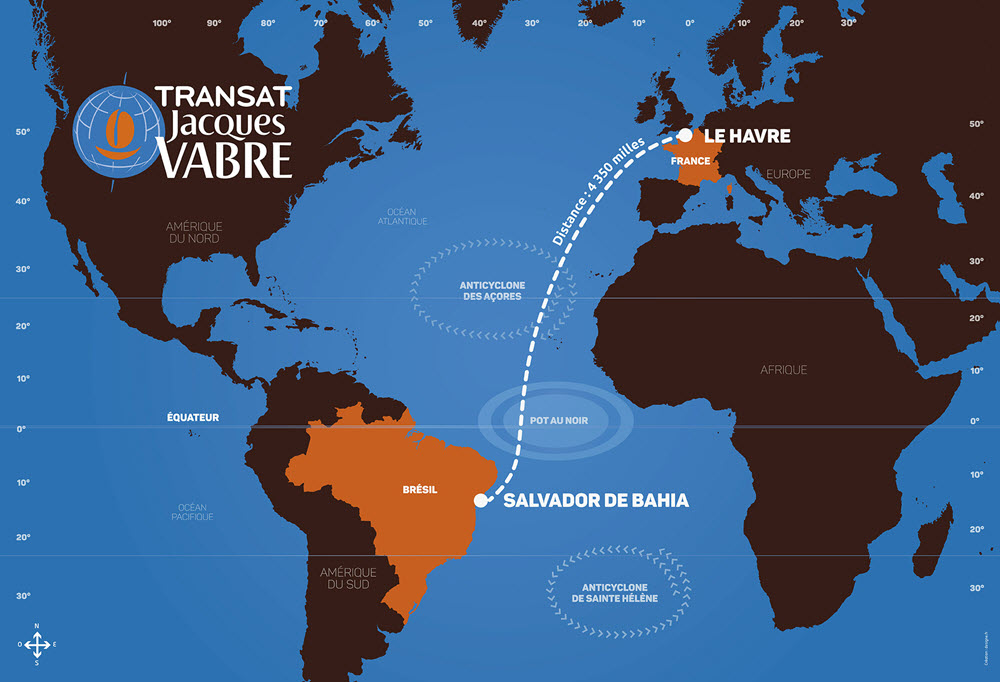

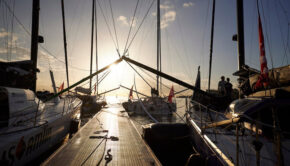
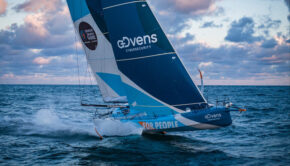
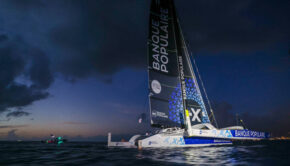
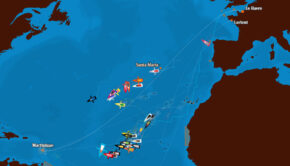
 We’ll keep your information safe.
We’ll keep your information safe.